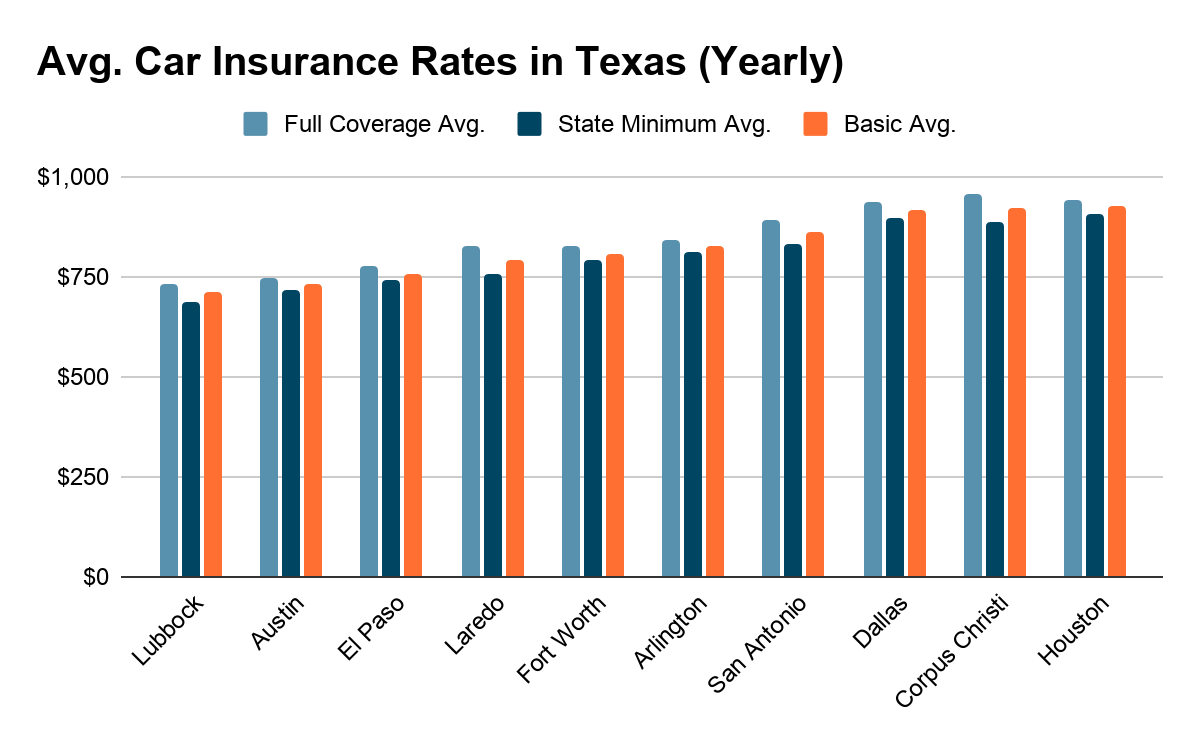

Finance
How To Remove Force-Placed Auto Insurance
Modified: December 29, 2023
Learn how to remove force-placed auto insurance and regain control of your finances.
(Many of the links in this article redirect to a specific reviewed product. Your purchase of these products through affiliate links helps to generate commission for LiveWell, at no extra cost. Learn more)
Table of Contents
- Introduction
- Understanding Force-Placed Auto Insurance
- Reasons for Having Force-Placed Auto Insurance
- The Consequences of Force-Placed Auto Insurance
- Steps to Remove Force-Placed Auto Insurance
- Step 1: Review Your Current Insurance Coverage
- Step 2: Contact Your Lender or Loan Servicer
- Step 3: Provide Proof of Insurance
- Step 4: Follow Up and Monitor the Removal Process
- Conclusion
Introduction
Welcome to our comprehensive guide on how to remove force-placed auto insurance. If you are unfamiliar with force-placed auto insurance, you’re in the right place. In this article, we will provide you with a clear understanding of what force-placed auto insurance is, the reasons for having it, and the steps you can take to remove it.
Force-placed auto insurance refers to a type of insurance policy that is purchased by a lender or loan servicer on behalf of a borrower. It is commonly required when the borrower fails to maintain the proper level of auto insurance coverage as specified in the loan agreement. While force-placed auto insurance serves as a way to protect the lender’s financial interest in the vehicle, it can often be an expensive and unnecessary burden for the borrower.
In many cases, borrowers already have their own auto insurance coverage in place but may run into issues that cause their coverage to lapse. This can happen due to missed payments, policy cancellations, or other unforeseen circumstances. When this occurs, the lender or loan servicer steps in to fill the insurance gap by purchasing force-placed auto insurance and adding the cost to the borrower’s loan balance. Unfortunately, force-placed auto insurance is typically more expensive than regular auto insurance policies, which can create financial strain for the borrower.
Removing force-placed auto insurance can play a crucial role in alleviating financial stress and helping borrowers regain control over their insurance coverage. By taking the right steps and providing proof of alternative insurance coverage, borrowers can successfully remove force-placed auto insurance and save money in the process.
In the following sections, we will delve further into the details of force-placed auto insurance, the reasons for having it, and the consequences it can have on borrowers. We will also provide you with a step-by-step guide on how to remove force-placed auto insurance and regain control over your own insurance coverage. So, let’s dive in!
Understanding Force-Placed Auto Insurance
Force-placed auto insurance, also known as lender-placed auto insurance, is a type of insurance policy that is purchased by a lender or loan servicer on behalf of a borrower. It is typically required when the borrower fails to maintain the required level of auto insurance coverage as specified in the loan agreement.
The purpose of force-placed auto insurance is to protect the lender’s financial interest in the vehicle. If the borrower’s own auto insurance coverage lapses or is insufficient, the lender or loan servicer steps in to ensure that there is coverage in place. They will then add the cost of the force-placed insurance to the borrower’s loan balance.
Force-placed auto insurance policies are often more expensive than regular auto insurance policies. This is because they are designed to provide coverage for the lender’s financial interest in the vehicle, rather than providing comprehensive coverage for the borrower. Additionally, the lender or loan servicer has the authority to choose the insurance provider and policy terms, further increasing the cost.
It’s important to note that force-placed auto insurance is not intended to be a long-term solution. Its purpose is to protect the lender’s interests until the borrower can provide proof of their own insurance coverage. Once the borrower can demonstrate that they have secured the required level of coverage, the force-placed insurance can be removed.
Force-placed auto insurance typically provides only minimal coverage. It typically includes liability insurance, which covers bodily injury and property damage that the borrower may cause to others while operating the vehicle. However, it does not provide coverage for the borrower’s own medical expenses or damages to their own vehicle.
It’s important for borrowers to understand the terms and conditions of their force-placed auto insurance policy. They should be aware of the coverage limits, policy period, and any additional fees or charges associated with the policy. Understanding these details will enable borrowers to make informed decisions about their insurance needs and take the necessary steps to remove force-placed auto insurance.
In the next section, we will discuss the reasons why force-placed auto insurance may be required, shedding light on the circumstances that can lead to its imposition. Understanding these reasons can help borrowers avoid the need for force-placed insurance in the future.
Reasons for Having Force-Placed Auto Insurance
Force-placed auto insurance is typically required when borrowers fail to maintain the proper level of auto insurance coverage as specified in their loan agreement. There are several reasons why force-placed auto insurance may be imposed on borrowers:
- Lapsed Coverage: One of the most common reasons for force-placed auto insurance is when the borrower’s own auto insurance coverage lapses. This can happen due to missed payments, policy cancellations, or other unforeseen circumstances. If the lender discovers that the borrower’s insurance coverage is no longer in effect, they may step in to protect their investment in the vehicle.
- Inadequate Coverage: In some cases, borrowers may have an auto insurance policy in place, but it does not meet the minimum coverage requirements as specified in their loan agreement. For example, the borrower’s policy may have lower liability limits or may not include comprehensive and collision coverage. In such instances, the lender or loan servicer may require force-placed insurance to ensure that the vehicle is adequately protected.
- Noncompliance with Loan Requirements: Loan agreements often include specific insurance requirements that borrowers must meet. This may include maintaining comprehensive and collision coverage, listing the lender as the loss payee or lienholder on the policy, or providing proof of insurance to the lender. Failure to comply with these requirements may result in the imposition of force-placed auto insurance.
- High-Risk Borrowers: Borrowers with a history of insurance lapses or high-risk driving behavior may be viewed as a greater risk by the lender. In such cases, the lender may require force-placed auto insurance to mitigate their risk and ensure that there is coverage in place, regardless of the borrower’s insurance history.
- Uninsured Collateral: In some cases, lenders may require force-placed auto insurance if the vehicle being financed is uninsured or the borrower has failed to provide proof of insurance for the collateral. This is done to protect the lender’s financial interest in the vehicle in case of damage or loss.
It is important for borrowers to understand the reasons why force-placed auto insurance may be imposed, as this can help them avoid the need for it in the future. By maintaining the proper level of auto insurance coverage, complying with loan requirements, and being proactive in managing their insurance policy, borrowers can minimize the likelihood of force-placed auto insurance being enforced.
Next, we will discuss the consequences that force-placed auto insurance can have on borrowers, highlighting the financial and operational challenges it can present.
The Consequences of Force-Placed Auto Insurance
Force-placed auto insurance can have several negative consequences for borrowers, both financially and operationally. Understanding these consequences can help borrowers realize the importance of removing force-placed insurance as soon as possible. Here are some of the potential consequences:
- Increased Cost: Force-placed auto insurance policies are often more expensive than regular auto insurance policies. The lender or loan servicer has the authority to choose the insurance provider and policy terms, which can result in higher premiums. This additional cost is typically added to the borrower’s loan balance, increasing their overall debt.
- Reduced Coverage: Force-placed auto insurance policies typically provide minimal coverage and may not adequately protect the borrower’s interests. While they may include liability insurance, it often does not cover the borrower’s medical expenses or damages to their own vehicle. This limited coverage can leave borrowers vulnerable in the event of an accident or other damage to their vehicle.
- Double Insurance: When force-placed auto insurance is imposed, borrowers often still have their own existing auto insurance policies in place. This means they end up paying for two insurance policies: their own policy and the force-placed policy. This can lead to financial strain and a waste of resources.
- Negative Impact on Credit: If a borrower fails to pay for the force-placed auto insurance or does not remove it promptly, it can negatively impact their credit score. Late payments or non-payment of insurance premiums can be reported to credit bureaus, making it more difficult for the borrower to obtain favorable loan terms or credit in the future.
- Operational Challenges: Force-placed auto insurance often comes with strict terms and conditions. Borrowers may be required to meet certain requirements, such as providing proof of insurance or listing the lender as the loss payee or additional insured on their policy. Failing to comply with these requirements can lead to further complications and potential penalties.
It is important for borrowers to proactively address force-placed auto insurance to minimize its consequences. By taking the necessary steps to remove the force-placed policy and provide proof of alternative insurance coverage, borrowers can alleviate the financial burden and ensure they have the proper protection in place.
Next, we will discuss the steps you can take to remove force-placed auto insurance and regain control over your insurance coverage. These steps can help you navigate the process and successfully remove the force-placed policy.
Steps to Remove Force-Placed Auto Insurance
If you find yourself with force-placed auto insurance and want to remove it, follow these steps to regain control over your insurance coverage:
- Step 1: Review Your Current Insurance Coverage
- Step 2: Contact Your Lender or Loan Servicer
- Step 3: Provide Proof of Insurance
- Step 4: Follow Up and Monitor the Removal Process
- Step 5: Confirm the Removal of Force-Placed Insurance
- Step 6: Maintain Continuous Insurance Coverage
Start by reviewing your current auto insurance coverage. Make sure your policy meets the minimum requirements specified in your loan agreement. Check the coverage limits, deductibles, and any additional endorsements that may be necessary. If your current policy does not meet the requirements, consider adjusting it or finding a new insurance provider that meets the criteria.
Reach out to your lender or loan servicer to communicate your intent to remove the force-placed auto insurance. Contact the appropriate department and provide them with your current insurance information and policy details. Let them know that you have the required coverage and are ready to provide proof of insurance.
Gather the necessary documents to prove that you have the required auto insurance coverage. This typically includes a copy of your insurance policy, declarations page, and any additional documentation requested by your lender. Ensure that your policy lists the lender as the loss payee or lienholder, if required.
Follow up with your lender or loan servicer to confirm that they have received your proof of insurance. Keep a record of all communication, including dates, names of representatives spoken to, and any instructions or requests provided. Monitor the process closely to ensure that the force-placed auto insurance is removed in a timely manner.
Once your lender or loan servicer confirms the removal of the force-placed auto insurance, review your loan statement or account to ensure that the associated charges have been reversed or removed. Verify that your regular auto insurance premiums are the only insurance-related charges reflected in your account.
After successfully removing the force-placed auto insurance, it is crucial to maintain continuous auto insurance coverage. Pay your insurance premiums on time, update your policy as needed, and promptly notify your lender or loan servicer of any changes to your coverage. This will help prevent the re-imposition of force-placed insurance.
By following these steps, you can effectively remove the force-placed auto insurance and regain control over your insurance coverage. It is important to remain proactive, communicate clearly with your lender, and provide the necessary documentation to expedite the process.
In the next section, we will conclude our guide and summarize the key points discussed throughout the article.
Step 1: Review Your Current Insurance Coverage
The first step in removing force-placed auto insurance is to review your current auto insurance coverage. This involves assessing your policy to ensure it meets the minimum requirements specified in your loan agreement.
Start by obtaining a copy of your current auto insurance policy and carefully review it. Take note of the coverage limits, deductibles, and any additional endorsements or add-ons you may have. Compare these details to the requirements outlined in your loan agreement to determine if your policy meets the necessary criteria.
Here are some key aspects to consider during your review:
- Liability Coverage: The loan agreement may stipulate a minimum liability coverage amount that you must carry. This coverage is typically expressed as three numbers, such as 25/50/25, indicating the monetary limits for bodily injury per person, bodily injury per accident, and property damage liability coverage, respectively.
- Comprehensive and Collision Coverage: Depending on the terms of your loan agreement, you may be required to carry comprehensive and collision coverage. This coverage helps protect your vehicle in case of damage caused by accidents, theft, or other covered perils.
- Additional Insured/Loss Payee: Some loan agreements may require you to list the lender as an additional insured or loss payee on your policy. This ensures that the lender’s financial interest in the vehicle is protected in case of an accident or loss.
- Deductibles: Take note of the deductibles specified in your policy. The deductible is the amount you must pay out of pocket before your insurance coverage kicks in. Make sure your deductibles align with the requirements set by your loan agreement.
- Policy Exclusions and Limitations: Familiarize yourself with any exclusions or limitations outlined in your auto insurance policy. Some policies may have restrictions on certain types of drivers, vehicle use, or coverage for specific events.
If you find that your current auto insurance policy does not meet the requirements set by your loan agreement, you may need to adjust your coverage or seek a new insurance provider. Contact your insurance agent or broker to discuss your options and ensure that your policy is aligned with the necessary criteria.
By carefully reviewing your current insurance coverage, you can determine whether adjustments are needed to meet the requirements set by your lender. This step sets the foundation for successfully removing force-placed auto insurance and transitioning to a policy that suits both your needs and loan agreement.
Next, we will move on to step 2, where we discuss how to contact your lender or loan servicer to initiate the process of removing force-placed auto insurance.
Step 2: Contact Your Lender or Loan Servicer
Once you have reviewed your current auto insurance coverage and identified any gaps or discrepancies, the next step in removing force-placed auto insurance is to contact your lender or loan servicer. This communication is crucial in notifying them of your intention to remove the force-placed insurance and providing them with the necessary information.
Here’s how you can effectively contact your lender or loan servicer:
- Identify the Correct Department: Call the customer service number provided by your lender or loan servicer and inquire about the appropriate department to contact regarding insurance-related matters. This may be the insurance department or a designated department specifically for force-placed insurance.
- Prepare Your Information: Before making the call, gather all the relevant information you will need to provide to the customer service representative. This includes your loan or account number, your contact information, and details about your current auto insurance policy, such as the insurance company, policy number, and coverage limits.
- Clearly Explain the Situation: When speaking with the representative, clearly explain that you have reviewed your insurance coverage and have identified that you meet the requirements specified in your loan agreement. Express your intention to remove the force-placed auto insurance and provide them with the relevant details of your current insurance policy.
- Ask for Instructions: Inquire about the specific process and documentation required to remove the force-placed insurance. Ask if there are any particular forms to complete or additional information they need from you. Request a confirmation of their receipt and acceptance of the information you provide.
- Take Note of the Communication: During the call, write down the date and time of the conversation, as well as the name and contact information of the representative you spoke with. Document any instructions or requests given to you during the conversation. This will serve as a record for future reference.
Keep in mind that some lenders or loan servicers may have specific procedures or protocols in place for removing force-placed insurance. By contacting them directly, you can ensure that you are following the correct process and provide the necessary documentation to expedite the removal.
Open and effective communication with your lender or loan servicer is crucial in successfully removing force-placed auto insurance. By taking the time to reach out, you are showing your commitment to resolving the issue and demonstrating that you have appropriate insurance coverage in place.
Next, in step 3, we will discuss the importance of providing proof of insurance to your lender or loan servicer to facilitate the removal process.
Step 3: Provide Proof of Insurance
After contacting your lender or loan servicer and expressing your intention to remove force-placed auto insurance, the next step is to provide them with proof of insurance. This documentation serves as evidence that you have the required coverage and meet the insurance requirements specified in your loan agreement.
Here’s what you need to do to provide proof of insurance:
- Gather Required Documentation: Collect the necessary documents to prove that you have the required auto insurance coverage. This typically includes a copy of your insurance policy, the declarations page, and any additional documentation requested by your lender or loan servicer.
- Verify Policy Details: Review your insurance policy and ensure that it meets the minimum coverage limits and any other requirements outlined in your loan agreement. Check that the policy duration and effective date align with the timeframe specified by your lender.
- Include Lender or Loan Servicer Information: If your loan agreement requires you to list the lender or loan servicer as an additional insured or loss payee, make sure that this information is accurately reflected on your insurance policy. Double-check that their name and contact information are included as specified.
- Submit Documentation: Provide the necessary proof of insurance documentation to your lender or loan servicer as per their instructions. This can typically be done by submitting the documents electronically via email, fax, or through an online portal, or by mailing physical copies if requested.
- Confirm Receipt: Follow up with your lender or loan servicer to confirm that they have received your proof of insurance. Keep a record of the date and time of the confirmation, as well as the name of the representative who confirmed the receipt. This will serve as a reference in case of any future discrepancies.
It’s important to comply with any specific instructions provided by your lender or loan servicer regarding the submission of documents. Submitting the required proof of insurance promptly and accurately will help facilitate the removal process and demonstrate your commitment to meeting the insurance requirements of your loan agreement.
Remember to keep copies of all documentation submitted for your records. This includes the proof of insurance, email confirmations, or any other correspondence related to the removal of force-placed auto insurance. Having these records on hand will be helpful if any issues arise or if you need to reference them in the future.
In step 4, we will discuss the importance of following up and monitoring the removal process to ensure the force-placed insurance is successfully removed.
Step 4: Follow Up and Monitor the Removal Process
Once you have provided the necessary proof of insurance to your lender or loan servicer, it is essential to follow up and monitor the removal process of the force-placed auto insurance. This step ensures that the necessary actions are taken and that the force-placed insurance is successfully removed from your account.
Here are the key steps to follow up and monitor the removal process:
- Keep a Record of Communication: Maintain a log of all communication related to the removal process. Record the dates and times of any phone calls, emails, or other correspondence, as well as the names and positions of the individuals you spoke with. This record will serve as a reference and help provide a clear timeline of the removal process.
- Request Confirmation: During your initial contact, ask your lender or loan servicer for an estimated timeframe for the removal of the force-placed insurance. Request confirmation of their acceptance of your proof of insurance and their assurance that the process is underway. This will help establish accountability and ensure that the removal process is progressing as expected.
- Follow Up by Phone or Email: If the estimated timeframe for the removal has passed without any updates or confirmation, reach out to your lender or loan servicer for an update. You can do this by either calling or sending an email to the department handling the removal process. Politely inquire about the status of the removal and politely request any additional information or actions required from your end.
- Document Results and Interactions: Make notes of any updates or responses received from your lender or loan servicer. Keep track of any additional instructions or requests they may have for you. This documentation will help you stay organized and ensure that you have a solid record of the removal process.
- Follow Through Until Completion: Continue to follow up until you receive confirmation that the force-placed insurance has been removed. If there are any delays or challenges, remain persistent in your communication and advocate for the resolution of the issue. Be proactive in providing any additional documents or information requested by your lender or loan servicer to expedite the removal process.
By actively following up and monitoring the removal process, you can ensure that your efforts to remove the force-placed insurance are successful. Being proactive and maintaining open communication with your lender or loan servicer will help expedite the process and provide peace of mind.
Once you receive confirmation that the force-placed insurance has been removed, proceed to step 5, where we will discuss the importance of confirming the removal and reviewing your loan statement for any associated charges.
Conclusion
Removing force-placed auto insurance is an important goal for borrowers who want to regain control over their insurance coverage and alleviate financial burdens. By following the steps outlined in this guide, you can successfully navigate the process and remove force-placed auto insurance from your account.
Throughout this guide, we have discussed the definition and implications of force-placed auto insurance. We explored the reasons why lenders impose it, as well as the various consequences it can have on borrowers. Understanding these aspects is crucial in realizing the importance of taking action to remove force-placed insurance.
The step-by-step process provided in this guide offers a clear roadmap for borrowers to follow. It emphasizes the significance of reviewing current insurance coverage, contacting the lender or loan servicer, providing proof of insurance, and diligently monitoring the removal process. By adhering to these steps, borrowers can successfully remove force-placed auto insurance and regain control over their insurance policies.
Remember, it is essential to maintain continuous auto insurance coverage that meets the requirements outlined in your loan agreement. By doing so, you can prevent the re-imposition of force-placed insurance and ensure ongoing protection for yourself and your vehicle.
If you encounter any challenges during the removal process or require clarification, don’t hesitate to reach out to your lender or loan servicer for assistance. Their guidance and support can help you navigate any complexities and ensure a satisfactory outcome.
In conclusion, removing force-placed auto insurance not only helps alleviate financial strain but also provides peace of mind knowing that you have the necessary coverage in place. By following the steps outlined in this guide and remaining proactive in managing your insurance, you can take control of your financial well-being and protect your vehicle effectively.














